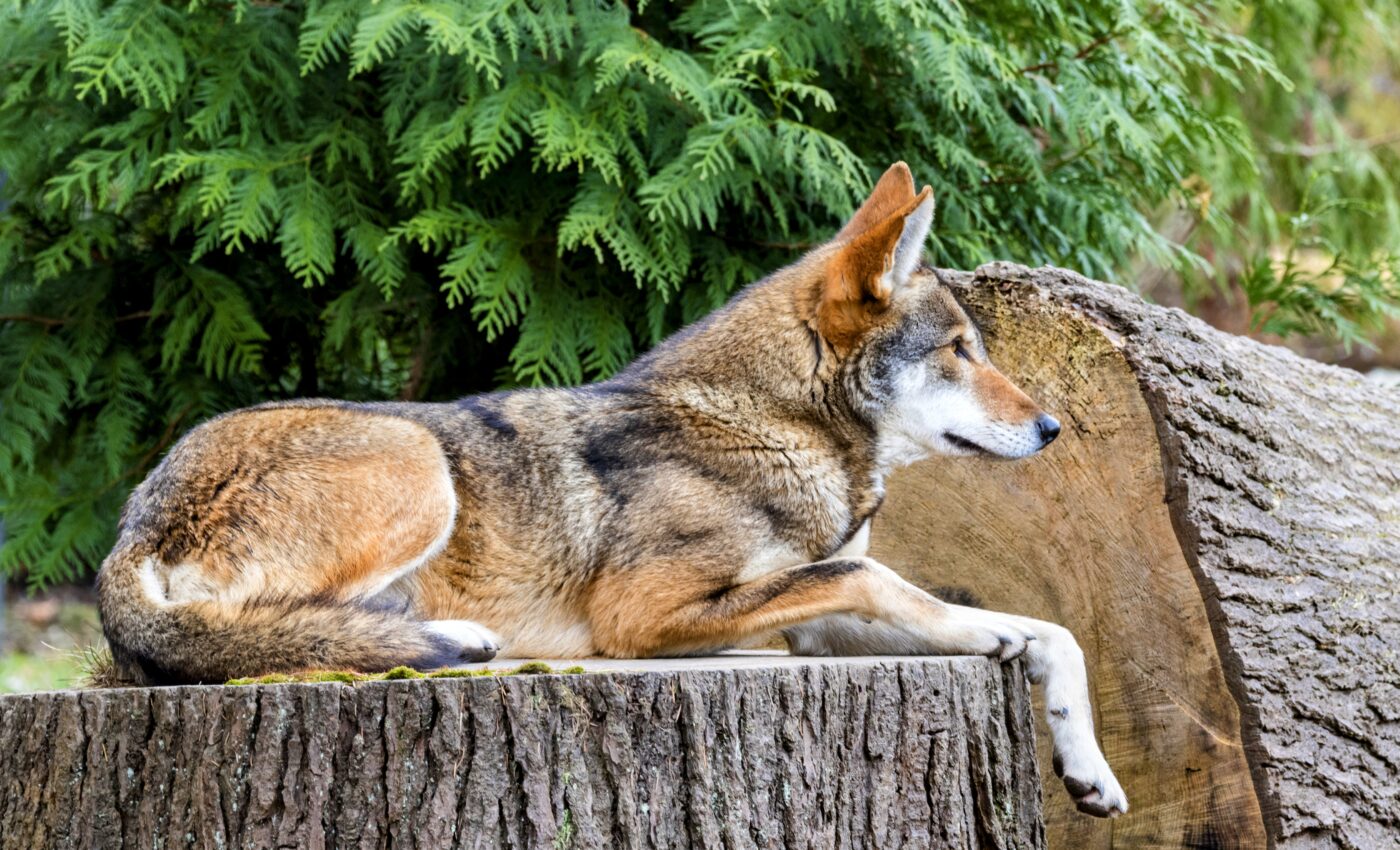
Fatal encounters: The future of the red wolf remains unclear
The red wolf, a carnivore native to the southeastern United States, has historically been a vital component of this region’s ecosystem. Renowned for its reddish-tan fur and notable hunting capabilities, the red wolf plays a crucial role in maintaining a balanced environment by regulating the populations of smaller mammals.
Yet, despite its significance, the century has witnessed the wolf’s numbers plummet, a decline largely attributed to human activities. By the 1980s, the repercussions of these activities were so severe that the red wolf was deemed extinct in the wild.
Fragmented habitats
Human actions primarily caused the red wolf’s decline. As settlements expanded and natural habitats were encroached upon, the spaces where these wolves once roamed became fragmented and diminished.
The reduced habitat not only meant limited territory for the wolves but also a decline in the prey base, resulting in less food availability. Moreover, wolves became targets due to misinterpretations and vilifications in folklore and popular culture.
Unregulated hunting
Unregulated hunting further exacerbated the situation, pushing the red wolf to the brink of extinction by the late 20th century. Such dire circumstances necessitated immediate conservation actions.
Reintroduction
Recognizing the urgency, the U.S. Fish and Wildlife Service (FWS) initiated a comprehensive recovery program in the latter part of the 1980s. The multi-faceted strategy employed by the FWS included a captive-breeding program, where wolves were bred in a controlled environment to boost their numbers.
This approach ensured the creation of a healthy population ready for reintroduction into the wild. Subsequent reintroductions targeted specific natural habitats that historically were part of the wolf’s range, with wildlife refuges such as the Pocosin Lakes playing a pivotal role.
Conservation challenges
Yet, conservation, while hopeful, is not without its own set of challenges. Even as efforts to reintroduce the wolves intensified, several roadblocks emerged.
Fatal encounters
First, human-induced mortality continued to be a significant problem. People often mistakenly shot wolves, thinking they were their distant cousins, the coyotes.
In an attempt to reduce such incidents, the FWS took the measure of equipping the reintroduced wolves with orange, reflective collars, signaling their protected status.
However, even with such precautions, fatal encounters persisted, hinting at a more deep-rooted issue tied, perhaps, to long-standing prejudices.
Coyotes
Another significant challenge arises from the burgeoning coyote population in the southeastern United States.
Coyotes not only vie for the same resources as the red wolves, creating competition, but also pose a genetic threat. Interbreeding between coyotes and red wolves could dilute the pure genetic lineage of the latter.
As a countermeasure, the FWS adopted a novel approach: sterilizing coyotes while leaving them hormonally intact. This would allow these coyotes to defend territories, thus minimizing intrusion from fertile coyotes, yet without adding to the gene pool.
Vehicle collisions
Vehicle collisions further threaten the wolf’s survival. High-speed roads traversing through or alongside wolf habitats have resulted in numerous fatalities. Recognizing this danger, authorities have placed warning signs, especially in regions known for wolf activity, urging motorists to drive with caution.
Lack of space
However, the most formidable challenge lies in securing enough space for the wolves. Despite the vastness of the refuges, the territorial nature of red wolves means that each pack requires considerable space.
A single pack’s territory can span up to 80 square miles, depending on prey availability. Given this, the existing refuges are inadequate to support a growing population. The realization underscores the necessity of incorporating private lands into the conservation strategy.
Addressing these challenges
Programs such as “Prey for the Pack” were devised to address this spatial challenge. Introduced in 2020, this initiative incentivizes landowners to make habitat improvements favorable for the wolves, offering reimbursements for such efforts. In return, the FWS gets the requisite access to these lands for conservation activities.
Yet, gaining widespread acceptance for such programs remains problematic, as illustrated by public meetings where sentiments against the wolves and conservation efforts come to the fore.
Updated recovery plan
Despite the challenges, the fight for the red wolf’s survival remains a testament to human responsibility. As with many endangered species, it is a stark reminder that while human actions might have caused their decline, similar actions, if channeled correctly, can also facilitate their recovery. The story of the red wolf emphasizes the delicate balance of our ecosystems and the importance of each species within it.
For the first time in three decades, the FWS is preparing to release an updated recovery plan for this iconic species. According to a recently released draft, the agency will spend a quarter billion dollars over the next half a century to rebuild and expand the wild wolf population.
“It was done once before,” said Joe Madison, the North Carolina manager for the Red Wolf Recovery Program. “And we can do it again.”
Like what you read? Subscribe to our newsletter for engaging articles, exclusive content, and the latest updates.
—–
Check us out on EarthSnap, a free app brought to you by Eric Ralls and Earth.com.













